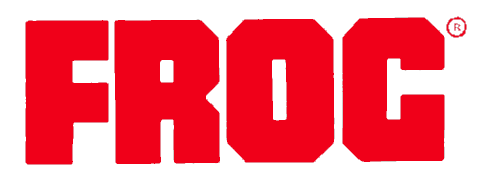
FROG Red Series F186 Lockheed P-38J/L Lightning, Rovex Industries Ltd, 1967

|





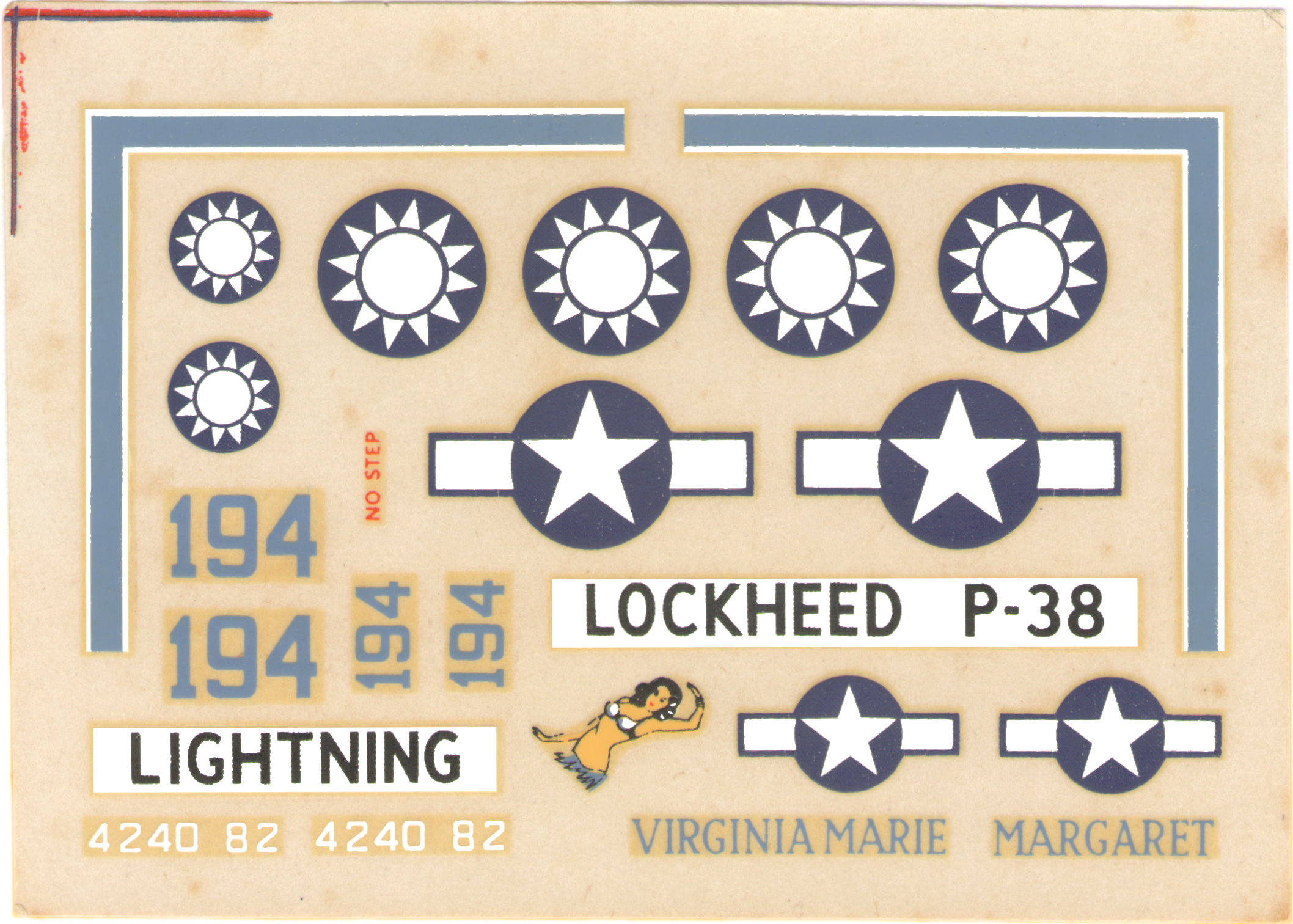

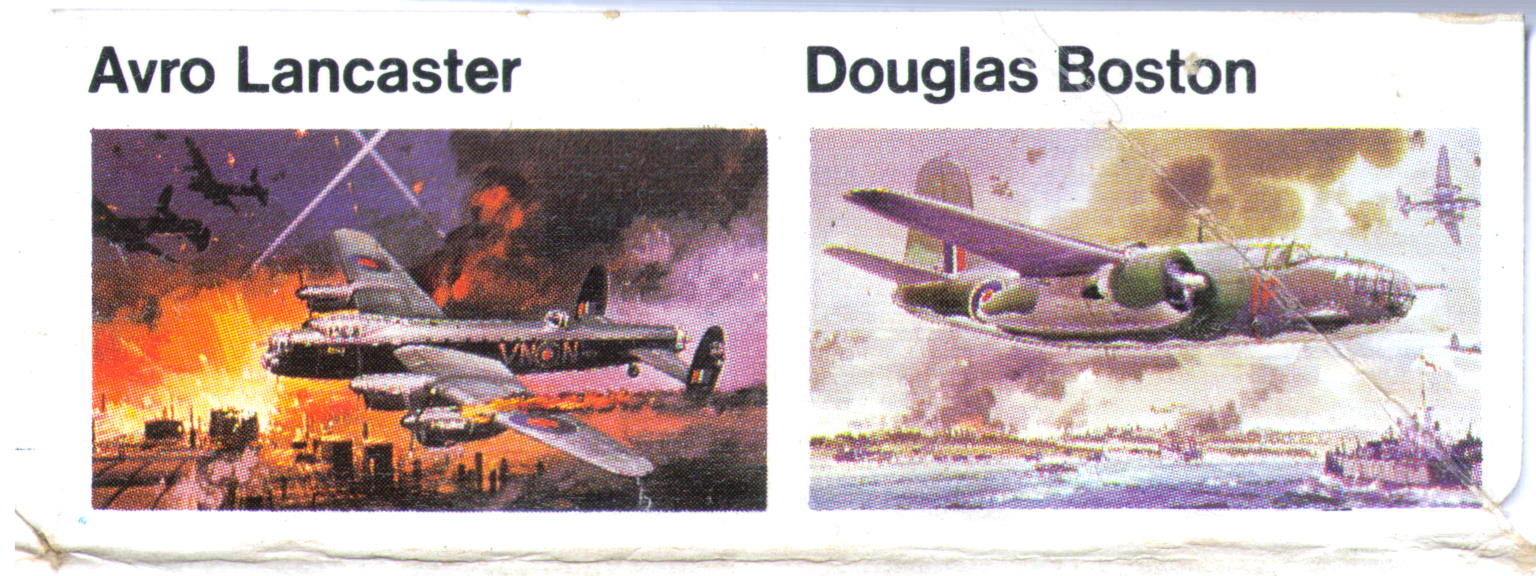
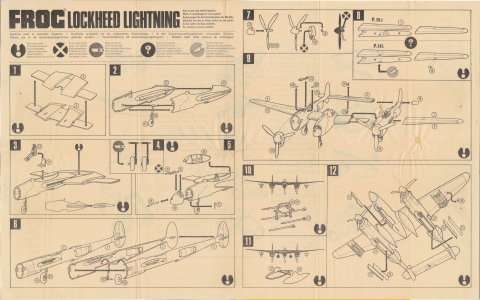
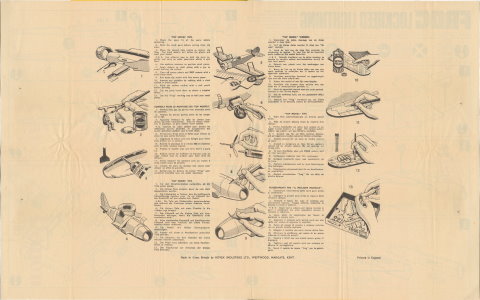
Lockheed P-38J/L Lightning
| F186 | 1967-1974 | G1(R) | 270000 | 1xUSAAF & 1xNatCh AF |
FROG model aircraft 1932-1976, R. Lines, L. Hellstrom
|
|
НОВЫЕ И В ПРОДАЖЕ
МОДЕЛИ САМОЛЕТОВ
FROG. Вслед за Shackleton выйдет P-38J Lightning в масштабе 1/72, затем набор Lysander, из которого можно собрать как Mk. I, так и Mk. III для заброски агента. После этого появится Blackburn Shark на поплавках или колесах, альтернативная маркировка для обоих типов включена в набор. Все эти наборы должны появиться до или вскоре после Рождества.
The IPMS magazine, Vol.5 No.10, OCTOBER 1967
НОВЫЕ И В ПРОДАЖЕ
НОВЫЕ АВИАЦИОННЫЕ КОМПЛЕКТЫ
FROG. Lockheed P-38J и Lightening. Масштаб 1/72. Цена 3/6d. (U.K.)
Этот набор точен в общих чертах, но хотя детализация панелей и заклепок приемлема, слишком переразмеренные детали заклепок вокруг передней части мотогондол двигателей придется сошлифовать. Внешний вид модели также будет улучшен, если открыть воздухозаборники радиатора. Стыковка деталей, которые отлиты из светло-коричневого пластика, превосходна, а необычный метод их сборки гарантирует, что модель легко собрать и она будет жесткой в собранном виде.
Фонарь превосходен, очень четкий и правильной формы, а турбонагнетатели отлиты отдельно и очень хорошо детализированы, как и детали шасси. В комплект входят характерные для P-38L узлы подвески ракет "Рождественская елка", а также сбрасываемые баки.
Декали также превосходны. Они состоят из маркировки китайского националистического P-38L и маркировки P-38J из 433-й истребительной эскадрильи, U.S.A.A.F. "Virginia Marie/Margaret", представленной в Профиле, описывающем серию P-38.
Это хороший набор, который может стать основой для многих конверсий. Для дальнейшего ознакомления мы рекомендуем книгу Kookaburra о P-38, которую можно приобрести в книжном магазине Bohemia Bookshop, 116 Bohemia Road, St. Leonards-on-Sea, Sussex, так как набор был основан на чертежах и фотографиях из этой публикации.
The IPMS magazine Vol.5 No.12, DECEMBER 1967
МОДЕЛИЗМ
У Р Мэтьюз
ДВУХВОСТАЯ МОЛНИЯ
Этот набор P-38 Lightning совсем немного не дотягивает до уровня очень хорошего. Выпущенный компанией Frog в масштабе 1/72, он имеет точные очертания и отличается новым и оригинальным методом сборки, в результате чего получается очень прочная модель, легко собираемая. Детали хорошо отлиты из высококачественного пластика, а лист декалей, предлагающий альтернативную маркировку для китайского националистического P-38L и P-38J ВВС США, действительно превосходен. Однако вся эта хорошая работа, к сожалению, испорчена небрежным исполнением детализации поверхности, включая рельефные линии для обозначения узлов навески управляющих поверхностей. Мы очень надеемся, что в будущем инструментальщики Frog будут более аккуратными.
НОВЫЕ НАБОРЫ (последние рецензии на полученные экземпляры)
| MAKE | AIRCRAFT | SCALE | PRICE |
| Airfix | Heinkei He 177A-5 | 1/72nd | 8s 6d |
| Airfix | General Dynamics F-111A | 1/72nd | 6s 6d |
| Airfix | Wallis WA 116 | 1/24th | 5s 0d |
| Frog | Lockheed P-38 Lightning | 1/72nd | 3s 6d |
| Revell | General Dynamics F111C | 1/72nd | 12s 6d |
| Revell | Junkers Ju 88A-4/D-1 | 1/72nd | 8s 8d |
| Revell | Bell UH-1D Iroquois | 1/32nd | $2.00 |
| Monogram | Bell UH-1B froquois | 1/48th | $1.00 |
| Aurora | Bell AH-1G HueyCobra | 1/48th | $1.00 |
RAF Flying Review February, 1968, Vol. 23, No. 6
MODELLING
W R MATTHEWS
ЦВЕТ ЭТОГО МЕСЯЦА
Несмотря на то, что в количественном отношении этот самолет был выпущен в меньшем числе, чем другие основные истребители USAAF Второй мировой войны, почти уникальная конфигурация Lockheed Lightning вызывает определенное восхищение у моделистов, и неудивительно, что на полках магазинов появилось множество пластиковых наборов, предназначенных для воспроизведения этого боевого самолета. Однако только один из них делает Lightning по-настоящему достоверным, и это превосходный набор в масштабе 1/48 от Monogram, к которому нельзя предъявить никаких претензий. Наборы в масштабе 1/72 от Airfix и Frog, хотя и обладают своими достоинствами, не являются представителями самых высоких стандартов, достигнутых ни одним из производителей, а два набора, предлагаемые Aurora, очень старые и полностью обнаруживают свой возраст.
К сожалению, все наборы P-38 Lightning, представленные на рынке, представляют собой поздние серийные версии самолета с радиаторами типа "борода", которые появились на P-38J-1-LO и стали результатом размещения воздухозаборника интеркулера между воздухозаборниками масляного радиатора. С точки зрения моделирования, за исключением радиаторов с бородой, P-38 Lightning практически не изменился внешне на протяжении всего периода производства, и пока какой-нибудь предприимчивый производитель не поймет, что "Молнии" использовались задолго до появления P-38J на операциях в августе 1943 года, опытный моделист не должен испытать больших трудностей в создании приемлемого P-38F или G из одного или другого из доступных наборов.
RAF Flying Review April, 1968, Vol. 23, No. 8
НЕДАВНИЕ НАБОРЫ
В догонку
В конце 1967 года появился настоящий шквал новых наборов, и два из тех, что мы до сих пор не рассмотрели, достойны упоминания. Frog выпустила Lockheed P-38J/L Lightning в масштабе 1/72, самолет, который также доступен в Airfix, так что это не новый тип для данного масштаба. За исключением извечного недостатка Frog - слишком сильной клепки, набор является прекрасным примером целостности современных моделей, с аккуратной деталировкой, небольшим количеством облоя и точным литьем. Все это приводит к тому, что набор собирается точно и легко, а в готовом виде представляет собой очень приятную модель. Переводные листы и схемы окраски даны для P-38L китайских националистических ВВС или P-38J, на котором летал лейтенант К. Роберт Андерсон из 433-й истребительной эскадрильи ВВС США.
Дж.Д.Р.Р.
AIR PICTORIAL Vol. 30 No. 4 April 1968
ЭНТУЗИАСТ МОДЕЛИЗМА
Цветная тема этого месяца
В момент своего появления на свет Lockheed P-38 Lightning поражал количеством и разнообразием инноваций, которые он воплотил в себе - турбокомпрессоры, радикальная конфигурация с двумя балками и шасси с носовым колесом - и был замечательным самолетом в некоторых аспектах. Если прозвище Der Gabelschwanz Teufel ("Вилохвостый дьявол"), возможно, обязано своим происхождением публицисту компании Lockheed с красочным воображением, а не восхищенным пилотам Люфтваффе, то, тем не менее, Lightning был очень хорошим боевым самолетом, который завоевал репутацию замечательного универсала и имел выдающуюся боевую карьеру. На малых и средних высотах он был превосходным перехватчиком бомбардировщиков и отличным истребителем дальнего сопровождения. Он был уникален среди истребителей Второй мировой войны тем, что использовал штурвал управления, а не обычную рукоятку, что, по мнению многих, не способствовало легкости маневрирования; на модели P-38F-15 была введено положение закрылков на боевом режиме на 8 градусов, чтобы увеличить коэффициент подъемной силы на виражах, а P-38J-25 получил элероны с электроприводом - одно из первых применений управления с электроприводом на любом истребителе - в дальнейшей попытке увеличить маневренность. Но если по сравнению со своими одномоторными современниками P-38J-25 не обладал достаточной маневренностью, он все же смог уничтожить больше японских самолетов, чем любой другой истребитель, действовавший на Тихом океане.
На сегодняшний день существует 10 различных наборов "Lightning" в разных версиях и в разных масштабах. Он привлек внимание производителей наборов на ранней стадии и с тех пор сохраняет свою популярность. В числе первых была компания Aurora с набором P-38J в масштабе 1/48, который в свое время был хорошо продуман, но сейчас кажется очень грубым по нынешним меркам. Этот набор также появлялся время от времени под марками Marusan и UPC. Первым в Великобритании был Airfix с P-38J в масштабе 1/72, и хотя он был хорош для своего времени, сейчас он уже давно не существует. Следующей на очереди был Monogram с первым действительно хорошим набором P-38, который, по нашему мнению, остается лучшим из доступных в любом масштабе и является выдающимся продуктом. Выполненный в масштабе 1/48, он включает альтернативные детали, позволяющие собрать стандартный P-38J, модификацию J "pathfinder", самолет-фоторазведчик F-5B и двухместный вариант ночного истребителя P-38M.
Frog вышел на сцену с хорошим P-38J в масштабе 1/72, который также был выпущен AMT и Hasegawa, а Airfix выпустила хороший набор P-38F в том же масштабе, выбор этого более раннего варианта означает, что он скорее дополняет набор Frog, чем напрямую конкурирует с ним. Оба набора можно рекомендовать, использование комбинаций компонентов из этих двух наборов открывает путь к конверсии практически в любой из одноместных вариантов. Самый последний и самый большой набор для P-38 Lightning от Revell, изображающий J-модель, выполнен в масштабе 1/32. Если вы любите большие модели, то этот набор можно смело рекомендовать. Другие появившиеся наборы P-38 были выполнены в масштабах от 1/63rd до 1/100, но кроме того, что они вряд ли будут доступны сейчас, они едва ли заслуживают внимания серьезного моделиста.
Ф Дж Хендерсон
Air Enthusiast 1975-06 vol.08 no.06
|
|

FROG Blue Series F182 Lockheed P-38J/L Lightning, Rovex Models & Hobbies Ltd, 1976
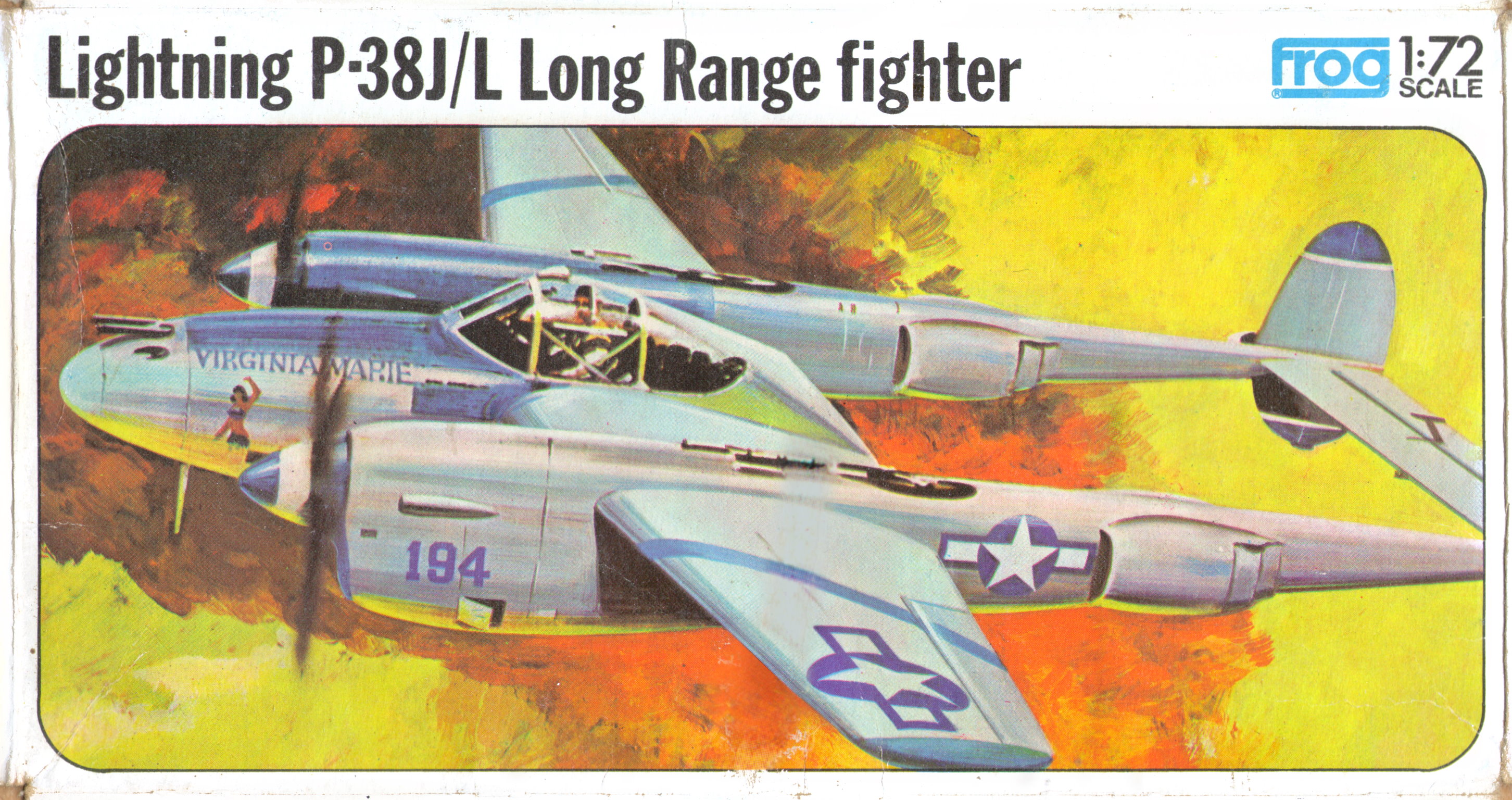
|



|

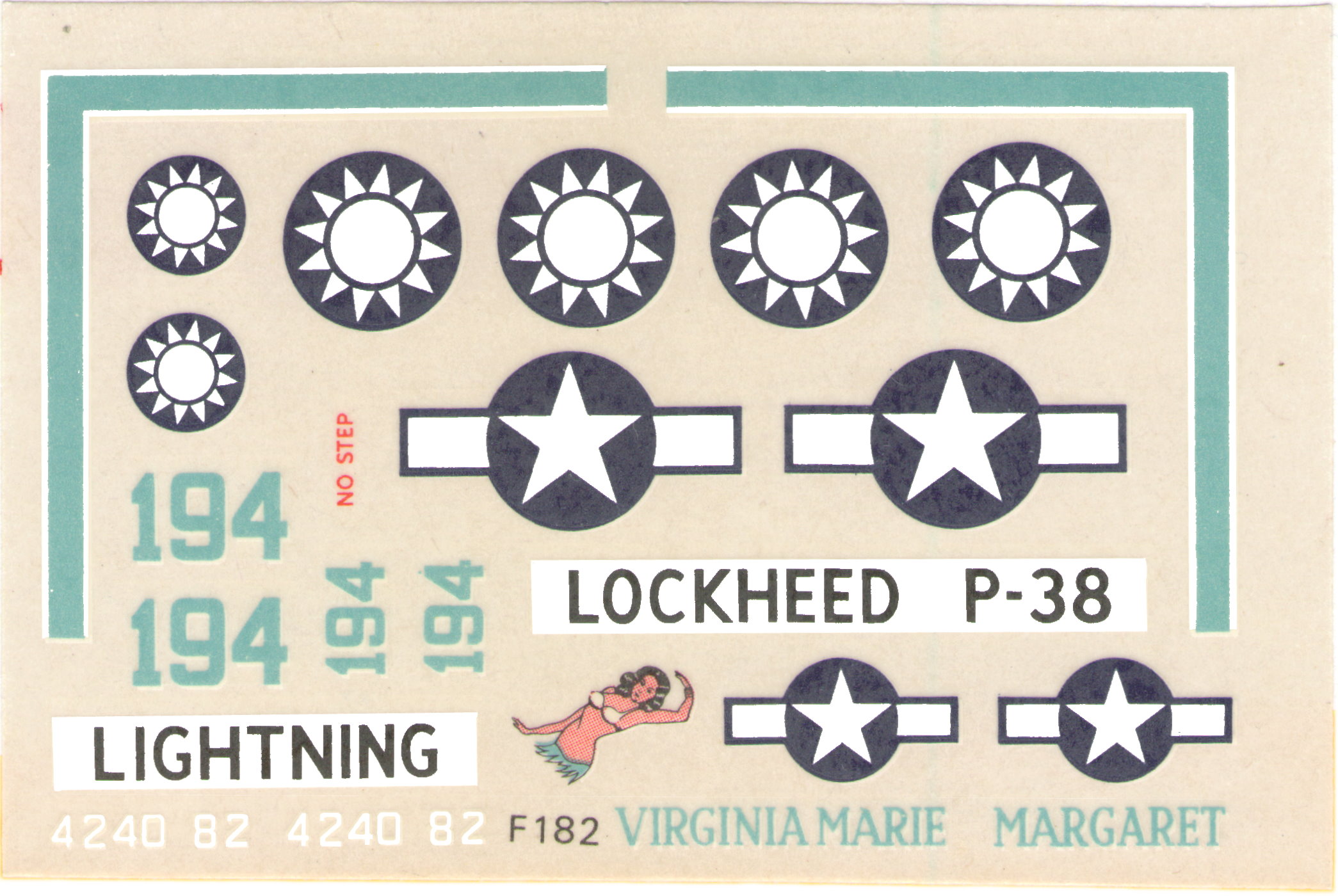
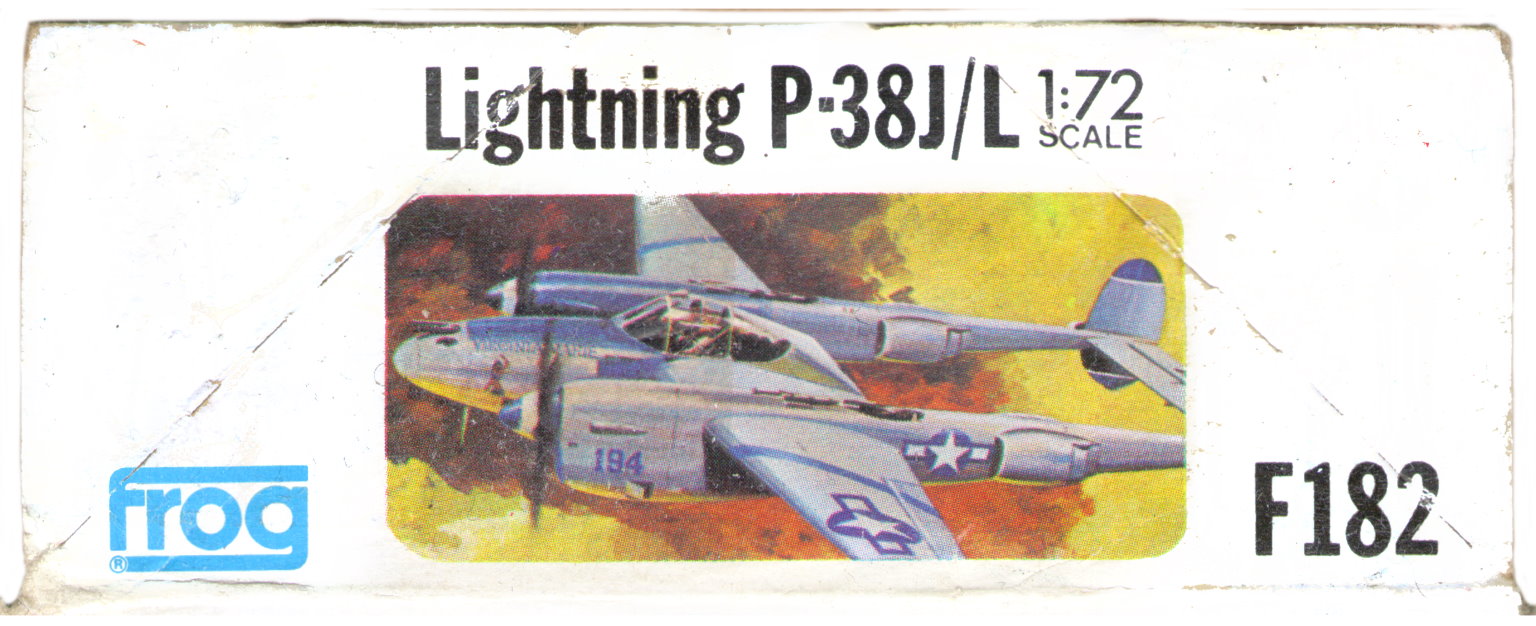


Lockheed P-38J/L Lightning
| F182 | 1976-1977 | H(B) | 20 000 | 1xUSAAF & 1xNatCh AF |
FROG model aircraft 1932-1976, R. Lines, L. Hellstrom
|
|
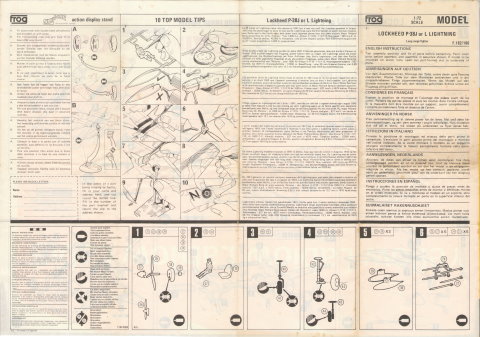

|
Novo Cat.No.78072 Lockheed P-38J/L Lightning, Novo Toys Ltd., 1980

|
|
Novo
Novo Toys Ltd., Maxey, Peterborough, England PE69HQ
Period: 1976-1981
Few, if any other kit companies have been subjected to as much rumour spreading, speculation and ill-informed guesswork as Novo. Neither has any other company name been so misused, and perhaps it is best to start by putting this straight.
As can be seen above, Novo was a British company, and it always was. Although the company name itself was derived from Novoexport, their Soviet trade partner, Novo was never owned by the Russians. In recent years, Novo has been used as a collective name for any ex-Frog kits coming out of the USSR, but nothing could be more wrong or misleading. Only kits actually packed in Novo packaging should be called Novo kits. Anything else can only be described as kits by the Soviet factory in question (BFI, Krugozor, Tashigrushka etc.). If a collective name is really necessary, then one might perhaps use MLI (for the Soviet Ministry of Light Industry, who supervise most of these factories).
The events leading up to the creation of Novo have been covered in the Frog history section of this book and will not be repeated here. Suffice to say that a General Agreement was reached between Dunbee-Combex-Marx (the owner of both Novo and Rovex) and V/O Novoexport in August 1975. This agreement stipulated that DCM was to deliver moulds, tools and materials to Novoexport, who would pay for them by sending back finished goods from the same moulds. It must be pointed out that apart from model kits the agreement also covered a wide range of other toys. Novo Toys Ltd. was set up by DCM in 1975 to handle this business.
The finer details of the arrangement were set out in twelve contracts, three of which concerned the ex-Frog kits. A theoretical value (based on remaining production life and other factors) was set for each mould. These were totalled for each contract and a suitable mix of kits to the same amount was worked out, meaning that payment for a particular mould did not necessarily consist of kits from that very same mould only.
Once the agreed quantity of kits had been delivered by Novoexport, the moulds were considered their property and all future purchases by Novo had to be paid for in cash. In the event, no such follow-up orders were ever placed by Novo.
The first moulds were sent out to the USSR in early 1976 (i.e. almost a year before Frog production by Rovex finally ceased) and these were distributed among the several Soviet factories undertaking the actual production. With the exception of the Dennis Ambulance, Firefly Dinghy and the Axis aircraft sold to Revell, all Frog moulds still with Rovex in 1976 were shipped to the Soviet Union over the next year or so. Of these, the Britannia, R-100 and the car kits were considered to be of little interest to the Western market, and consequently no Novo numbers were ever assigned. Although not specifically mentioned in any contract, it is believed that the Soviets also took delivery of the old Drifter and Tug Boat moulds.
The Novo kit number incorporated the original projected year of release (e.g. 76001). Some kits were in fact delivered to Novo in 1976, but not until 1977 was a marketable range available and released. Due to this, no additional kits were planned for 1977, but instead delayed until 1978 and given numbers starting with 78. The many gaps in the sequence were partly filled by other Novo products.
Getting the Russians to keep up with the delivery schedule was the main Novo headache. From the very start and until the very end, Novoexport were constantly behind in their deliveries. The reasons were of course many, but a few of these warrant some comments.
Problems with production facilities and moulds were common. Although certain Soviet factories were fairly well-equipped, others had obsolete and unsuitable machinery. Staff competence and maintenance levels also sometimes left something to be desired. This not only slowed down production, but also led to some moulds being damaged. The Mirage mould, for example, was left out-doors one winter and was of course thoroughly rusty by spring! (It was later restored to usable condition.)
The mould for the old Typhoon, when returned to the UK for repairs, was found to be missing all six original locking bolts holding the two halves together. These had been replaced by four new ones of inferior material. Had these broken during operation (remembering that plastic was being injected with a pressure of over 500 p.s.i., or 35 kp/cm2), the mould would probably have been completely destroyed along with the injection machine and its unfortunate operator. The same mould had also been repaired by the Russians, using brass instead of toughened steel.
All in all, Novoexport complained about problems with some two dozen moulds. Of the eight subsequently repaired in the U.K., five had damage caused by the Russians.
But the main problem was the inferior plastic used in the USSR. All Frog moulds were tuned to use Shell SI73 polystyrene (or equivalent), having a Melt Flow Index of 35. Soviet polystyrene, on the other hand, was found to have an index of around 4! This meant that, in order to make the plastic fill the mould, the temperature had to be increased by some 50°C and the injection pressure up to 100%. Not only was this very damaging to the moulds (several subsequently had to be repaired), but also often led to sub-standard mouldings. This since the extreme pressure forced the mould halves apart, letting plastic overflow into the gaps and form flash.
Neither was the low MFI the only problem with the plastic. An independent evaluation carried out in 1978 reads like a catalogue of faults: "Izod (= impact strength) very low .. . abnormally low I.V. (= inherent viscosity) . .. colour is poor and contamination excessive ... poor surface finish and gloss ... extremely brittle and not very rigid .. . must make good colouring difficult and appearance of finished article to be doubtful quality."
The third major problem was politics. Soviet laws take a pretty grim view of anything "fascist", which was why all German, Italian and Japanese aircraft were sold to Revell instead of being sent to the USSR. But other problems were to come up.
The original boxes for the Tupolev SB-2 showed one Luftwaffe marking alternative. Novoexport refused point-blank to touch these and Novo eventually had to print a replacement batch of some 105,000 box bottoms. The Luftwaffe portion of the decals were also cut away.
Later on, the Soviet Ministry of Culture classed the Fokker D.XXI as a "fascist aircraft" since it had been used by the Finnish AF in WWII. The fact that the Finns also used e.g. M.S.406, P-40, Lysander, SB-2, Hurricane, Gladiator and Blenheim - all of which were also included in the Novo range - did not seem to bother them, however. Subsequent Novo attempts to get this decision changed were all in vain. It should be noted that Novo had replaced the original Finish AF marking alternative with a Danish one, to avoid this very problem.
The next casualty was the Sea Fury. Due to a slip-up, the 1980 Novo catalogue described it as having shot down some MiG-15s during the Korean War. Novoexport were much upset by this and refused to deliver any more Sea Fury kits! Only a few kits from an earlier trial consignment ever reached the market. The same fate probably befell the Sea Venom, only this time the catalogue mentioned Egyptian MiGs destroyed in 1956. Only a small number of Sea Venoms were delivered, anyway.
Despite all difficulties, business was good for Novo and their kits sold well - mainly due to very competitive prices made possible by the unique set-up of the production. The downfall of Novo was thus not caused by economical problems as has often been suggested, at least not directly. However, Dunbee-Combex-Marx Ltd. fell into severe financial difficulties in 1979 and eventually had to go into receivership. Since DCM owned Novo, legal requirements forced Novo to do the same and the company passed into the hands of the receivers in February 1980. No buyer could be found in time and Novo Toys Ltd. was wound up later in the same year, although formal liquidation only took place five years later.
The last Soviet deliveries were made in mid-1980 and all kits had been sold out by early 1981. Remaining stocks of boxes, decals and instruction sheets (all printed in the UK) were handed over to Novoexport together with some original box artwork and other bits and pieces.
Box styles, artwork, decals and instructions were in general very similar to the late Frog issues. Indeed, early box mock-ups were almost identical to the Frog boxes except for the removal of the Frog logotype. Apart from the mock-ups, a small batch of similar test boxes were also printed before the style eventually used was finally agreed upon.
Although most Novo kits were boxed, it should be pointed out that kits 76001-76031 were packed in plastic bags with header cards.
Apart from box style, there were also some changes in artwork and decal sheets. Sixteen of the kits used completely new box top art and a few others had slightly changed versions of the Frog originals. In addition, five kits used art previously only utilised on Air Lines boxes.
The only all-new decals were those for the Dart Herald, F-82, Baltimore, VC10 and Boeing 707, although the first three probably had the new designs completed while still with Rovex. Either way, the design work was carried out by Dick Ward of Modeldecal. Apart from the previously mentioned Tupolev and Fokker, the only other known change was that the P-38 had its Chinese markings alternative replaced by a second USAAF one. Although the HMS Trafalgar box art showed the ship with the "RO9" pendant number of HMS Cadiz, the actual decals gave "D77" which was the post-war number of Trafalgar.
A great deal of speculation has taken place over the last few years as regards which kits Novo actually released. And this with some right, since it is indeed a very complex subject.
To begin with, a large number of kits were undeniably released. The kit listing which follows gives production quantities for these.
Secondly, certain kits belonging to the third phase of the third contract were definitely never released. They arc all marked "t" in the list, and for these kits no boxes, decals or instruction sheets were ever printed.
This leaves us with some twenty-three kits which were never officially released but nevertheless had all boxes etc. printed. In the list they all have the official production quantity zero. Regrettably, this does not represent the whole truth, and that for two reasons.
The first one is that trial consignments were often received by Novo and, although not included in the official production quantity, these kits were eventually sold by them. It is also possible that a few batches of slightly faulty and previously rejected kits were also sold out at a discount when Novo closed down. These consignments might number anything from a few dozen to several hundred kits, in some case perhaps more than a thousand.
In connection with this, the Boeing 707 is a special case worth mention. A batch of some 3,000 707s were received by Novo and quickly distributed. However, it was soon found that most kits suffered moulding defects and in the end all but a very few were recalled by Novo or returned to them by irate buyers.
The second reason is that when Novo closed down, Novoexport held enough "paper work" to produce another 2,750,000 Novo kits. It is a fact that some of this has since been used by the Russians. In many cases only the box has been used, omitting the decals and substituting the instruction sheet with a Russian one (or a photo-copy of the Novo original). But sometimes all three original items have been used and the only clue that these are "fake" Novo kits might be the somewhat odd plastic colour (Novo usually managed to avoid the more disgusting ones of the strange shades apparently beloved by Soviet plastic producers). However, in a few cases even this gives nothing away. Since these kits are produced in the same factories as before, using original Novo boxes, decals and instruction sheets, they are - for all practical purposes - Novo kits.
To give some (admittedly subjective) indication of the quantity known to exist of the "zero production" kits, one or two pluses have been added. Thus "0+ + " indicates that a reasonable quantity - perhaps a few hundred - has found its way on to the Western market. "0+" indicates that very-few, or none, have yet been seen. But this may of course change at any time; who knows when the Soviets decide to make use of their 46,000 sets of Twin Mustang packaging...
Finally, the four Russian aircraft - Anatra, MiG-3, LaGG-3 and Yak-3 - must also be mentioned. Produced by Rovcx in accordance with the 1975 DCM-Novoexport agreement, the moulds were kept with Novo in England for many years. But for various reasons they were never included in any of the actual contracts with Novoexport, nor were kit numbers assigned. When Novo closed down, the Russians were most interested in buying the moulds but lacked the hard currency needed. Later attempts by the receivers to sell them to other kit manufacturers - including Lindberg, Monogram, Revell and Starfix - all failed. Not until 1983 were they finally disposed of, to Red Star (which see).
Throughout the list, the Novo number has been given as kit number. But all the kits also carried the old Frog number on the box; indeed, on the 76xxx kits this was more prominently displayed than the Novo number.
| | Qty |
| | 78072 | Lockheed P-38J/L Lightning | 0++ |
** Existence possible, information uncertain
FROG model aircraft 1932-1976, R. Lines, L. Hellstrom
|
|
|
|
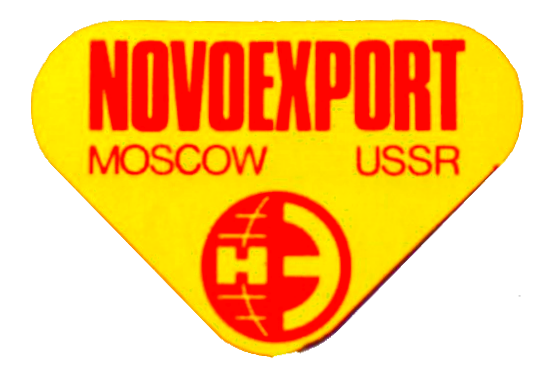
Novoexport Cat.No.78072 Lockheed P-38J/L Lightning, V/O Novoexport, not issued
|
|
Novoexport
V/O Novoexport, Bashitovskaya 19. Moscow 103287, USSR
Period: (1976 to date)
Novoexport is one of several state-owned Soviet export organisations, each specialising in a different type of merchandise, with Novoexport handling all sales of toys and similar goods.
Apart from the role played in connection with Novo (which see), Novoexport also had - and probably still has -an ambition to export kits produced from the old Frog moulds under their own name.
The first attempt took place in the mid-1970s, parallel to the introduction of Novo kits. Novoexport expressed a desire to export kits under their own name while simultaneously supplying kits to Novo. Novo had no objections and helped print a test batch of some 2,000 pieces each of fifteen header cards. No new instruction sheets were made, however. The cards were basically identical to those used by Novo, but with a red rather than blue border and a new logotype. However, Novoexport soon fell behind with their deliveries to Novo and, to ensure that no part of the Soviet production was diverted to other outlets, Novo refused to supply further header cards. The initial batch was never used commercially, but some cards have since surfaced from east Europe with Novo instructions and newly produced kits.
Attempt number two was initiated in September 1982, when contact was established with Capital Model Supply, a London hobby shop since gone bankrupt. After lengthy discussions a range of 24 kits was agreed upon (although the 1/96 scale Lancaster was later dropped) and by August 1984 a contract - giving CMS exclusive distribution rights -had been drawn up. However, at this point the financiers finally became aware of the true economic situation of CMS and consequently pulled out - only 48 hours before the contract with Novoexport was due to be signed!
Since no instruction sheets were printed for the first group, these kits have also been marked as projects only.
The observant reader will have noted that the last nine kits in the second group have numbers different from the Novo issues. These numbers are shown on a recent Soviet list and would in all probability have been used on the kits in question, had they been released.
2nd group
| + | 78072 | Lockheed P-38J/L Lightning |
FROG model aircraft 1932-1976, R. Lines, L. Hellstrom
|
|
|
|
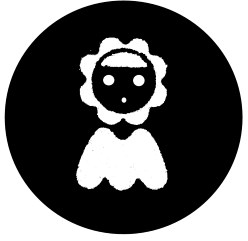
Escort fighter; 4777-BL; Minsk Industrial Union for Toy Production "Mir", 80 - 90-s
Истребитель сопровождения, 4777-БЛ; Минское производственное объединение по выпуску игрушек "Мир", 80-ые
1981
|
|
Z4.11.Z0ZZ
|
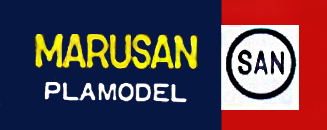
Marusan P-38L Lightning
|
|
|
|
Новые наборы и модели
МАЛЫЙ МАСШТАБ ИЗ ЯПОНИИ
Для авиамоделистов, собирающих коллекцию в масштабе 1:100, будет приятна новость о том, что японский производитель Marusan вышел на рынок с рядом наборов для Второй мировой войны в этом масштабе. Три набора уже поступили в продажу в Великобритании, и производители утверждают, что в ближайшее время появятся новые. В настоящее время доступны P-38L Lightning, Focke-Wulf Fw 190 и Yak-9P. Hellcat, Shiden и Thunderbolt будут доступны позже.
Имеющиеся наборы представляют собой вполне приемлемые модели. Размеры заклепок довольно велики, и если требуется абсолютная точность, придется внести одну или две модификации в контуры моделей. Никаких ухищрений нет. Каждый набор продается в магазине BMW Models (который предоставил нам образцы) по цене 2 шиллинга 6 пенсов.
А. У. Холл.
Airfix magazine August 1965 Vol.6 No.12
МОДЕЛИЗМ
У. Р. МЭТТЬЮЗ
Предложения с Востока
ТИПЫ СОЮЗНИКОВ, ПРОИЗВОДИМЫЕ В ЯПОНИИ
Нет необходимости говорить о том, что японские производители наборов не ограничиваются моделями отечественных самолетов. Недавно компания Kogure выпустила отличный набор в масштабе 1/48 с металлическим покрытием одного из самых грозных противников Японии в военное время - P-51D Mustang. Как и D4Y1, он также был выпущен изначально в виде прозрачной модели. Модель оснащена двигателем, батареи для которого размещены в модели бензобака, покрытие превосходно и варьируется по яркости для отображения панельного эфекта, а переводной лист также выполнен на очень высоком уровне. Чтобы добавить немного разнообразия, на этом листе приведены обозначения Мустанга, состоящего на вооружении ВВС США в послевоенное время. Две другие модели истребителей союзников военного времени, Spitfire IX и P-38L Lightning, обе в масштабе 1/48 от Marusan, имеют удивительно близкое сходство с наборами этих самолетов, выпущенных в США компаниями Monogram и Aurora соответственно. Однако переводные листы, прилагаемые к этим наборам, безусловно, оригинальны и, в случае Spitfire, неточны - маркировка соответствует Spitfire VB, а буквы на фюзеляже должны быть серыми, а не бледно-голубыми.
RAF Flying Review July, 1965, Vol. XX, No. 11
|
|
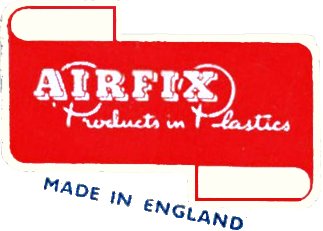
AIRFIX Series 2 1402, (02004-8) Lockheed P-38 Lightning, 1958
|
|
|
|
ТОРГОВЫЕ ЗАМЕТКИ
Новые пластиковые модели от Airfix серии 2 по цене 3 шиллинга за штуку сохранили популярный масштаб 1/72 и охватывают два фаворита среди двухмоторных самолетов Второй мировой войны - Bristol Beaufighter и двухбалочный Lockheed I Lightning. Не менее 55 деталей идут на изготовление готового Beaufighter T.F.X. Одномоторные типы, появившиеся в серии 1 Аитфикс, - это длинноносый Focke-Wulf 190D и Douglas A4D-1 Skyhawk по 2 шиллинга за штуку.
AeroModeller OCTOBER 1958 VOLUME XXIII NUMBER 273
БЕСЕДЫ О МОДЕЛЯХ С ДЖЕФФРИ НОРРИСОМ
ВОЗДУШНЫЙ МОДЕЛИЗМ:
Изменение к моему заявлению двухмесячной давности о том, что Стирлинг Мосс был первым человеком, построившим модель в воздухе - г-н Шейн Норман из Амплфорта, Йоркшир, пишет, что он построил Airfix Lockheed Lightning во время полета между Манчестером и Дублином на Fokker Friendship компании Aer Lingus в мае 1959 года. А теперь давайте послушаем того, кто построил старый набор Frog Penguin на самолете Handley Page Hannibal...
RAF Flying Review August, 1960, Vol. XV, No. 12
|
|

AIRFIX Series 3 398, (03018-0) Lockheed P-38E/F Lightning, 1973
|
|
|
|
КОММЕНТАРИЙ К НАБОРУ
РАННИЙ ЛАЙТНИНГ ОТ AIRFIX
Новейшее дополнение к серии 3 от Airfix - Lockheed P-38F, первый настоящий боевой вариант знаменитого «Лайтнинга». Набор из 67 деталей выполнен в маркировке американского подразделения на Гуадалканале в начале 1943 года и комплектуется декалями «Акулья пасть» для мотогондол. Размах крыльев составляет 8½ дюймов, а длина - 6 дюймов.
Поскольку все остальные модели P-38 в масштабе 1:72 изображают более позднюю модель "J", этот набор будет приветствоваться многими. Детализация поверхности, хотя и клепаная, достаточно легкая, чтобы не нарушать точность масштаба. Общий вид готовой модели приятен, и она, конечно же, может быть выполнена в различных маркировках и цветовых схемах, включая схему L-322 RAF, которая отличалась лишь незначительными деталями. Более амбициозные могут модифицировать носовую часть, чтобы сделать F-5A во французской или американской маркировке.
Особенно хорошо проработаны детали турбокомпрессоров на верхней части каждой мотогондолы, а также опоры шасси, пулеметы и весовые компенсоторы хвостового оперения. Два подкрыльевых подвесных бака также входят в набор, цена которого составляет 35 пенсов.
Aviation News Vol 1 Num 10 29 September - 12 October 1972
НОВИНКИ И В ПОЛЕ ЗРЕНИЯ
AIRFIX PRODUCTS LTD. Локхид P.38F. Молния. Масштаб 1/72. Серия 3
Являясь единственным доступным набором ранней марки P-38, эта прекрасная модель служит отличной основой для конверсии в другие марки, такие как F-4/F-5, истребители G и т.д.
Отлитая из средне-серого пластика, модель имеет довольно обширную детализацию поверхности (скорее избыток, чем слишком тяжелая детализация). Стыковка деталей очень хорошая, особенно балок и фюзеляжа. Шасси отлиты очень тонко, с хорошо представленными необходимыми подкосами.
Фонарь чёткий и хорошо проработанный, с правильным обрамлением, включая вышибную панель,также включены посадочные и опознавательные огни.
Единственный серьезный недостаток - это воздухозаборники на балках, которые слишком малы и имеют неправильную форму. На коробке изображена правильная форма, а в издании Kookaburra «Lockheed P-38 Lightning» Роя Кросса содержится полезный справочник вместе с серией «Камуфляж и маркировка» №18.
Эти две публикации охватывают все варианты P-38 и содержат множество данных по камуфляжу, маркировке и деталям самолета.
Декали набора предназначены для P-38F 48FS/14FG (код ES) и P-38F «S.33» с в акульими пастями, базировавшегося на Тихом океане. Эти декали особенно хорошо подходят.
Humbrol Olive Drab 41 и Neutral Grey 43 точно подходят для обоих этих самолетов, а синие кончики коков 14FG можно получить путем матирования Humbrol gloss Mediterranean Blue 48. Зеленый цвет интерьера кабины пилотов (ANA 6110) и опоры шасси и т.д. в серебре.
The IPMS magazine, NOVEMBER 1972. Vol. 9 No. 11
ЭНТУЗИАСТ МОДЕЛИЗМА
Создание коллекции
... и другие модели от Heller и Airfix
В последнее время особенно много внимания уделяется любителям авиамоделей Второй мировой войны, поскольку в дополнение к ранее упомянутым предложениям от Frog, мы получили ... Lockheed P-38F Lightning от Airfix, также в масштабе 1/72.
Последний из полученных наборов от Airfix представляет Lockheed Lightning, и это особенно приятно, поскольку он представляет первый действительно боевой вариант, P-38F, в то время как все остальные доступные наборы - это более поздние P-38J. Airfix проделал отличную работу над этим набором, который хорошо собирается и дает модель, которая точна в общих чертах. Особого внимания заслуживают аккуратные детали шасси и четкая отливка деталей турбонагнетателя на верхней части хвостовых консолей. Детали заклепок не слишком выражены, особенно после окраски, а декали матовые и довольно качественные. Представлены обозначения самолета 347-й истребительной группы ВВС США на Гуадалканале в феврале 1943 года с эмблемой «Акулья пасть» и самолета 14-й истребительной группы в Алжире в 1942 году, оба самолета имеют стандартную оливково-серую окраску. После менее чем удовлетворительного «Харрикейна», выпущенного Airfix в последнее время, P-38F Lightning служит напоминанием о том, что эта компания по-прежнему может предложить наборы в 1/72-м масштабе, соответствующие лучшим образцам. Цена этого набора в Великобритании составляет 35 пенсов, и это хорошая цена.
Ф. ДЖ. ХЕНДЕРСОН
Air Enthusiast 1973-01 vol.04 no.01
|
|

Matchbox PK-118 Lockheed P-38J Lightning, Lesney Products & Co Ltd., 1977
|
|
|
|
ЭНТУЗИАСТ МОДЕЛИЗМА
Двуххвостый «Лайтнинг»
P-38 Lightning компании Lockheed никогда не испытывал недостатка в поклонниках среди братства моделистов или, если уж на то пошло, среди производителей наборов. Дебют P-38 в виде набора состоялся около четверти века назад, когда Aurora впервые предложила набор в масштабе 1/48, который много лет спустя был превзойден отличным продуктом Monogram в том же масштабе. Еще более крупным является прекрасный набор в 1/32-м масштабе от Revell, а также несколько странных ранних работ от различных японских производителей. В 1/72-м масштабе Airfix был первым в этой области с P-38J, который эта компания дополнила очень много позже прекрасным P-38F, а Frog, тем временем, также выпустил P-38J. Как ни странно, за все это время ни одна американская компания не предложила «Лайтнинг» в 1/72-м масштабе, хотя мы понимаем, что Revell теперь планирует его выпустить. Теперь у нас есть еще один P-38J, выпущенный в Великобритании, но этот, предложенный Lesney в известной серии «Matchbox», предлагает альтернативную маркировку, позволяющую завершить его как P-38L.
Этот набор типичен для последних стандартов «Matchbox», с прекрасно чистыми от облоя отливками из бежевого, средне-зеленого, черного и прозрачного пластика, и состоит из 75 деталей в целом. К набору нельзя предъявить претензий по точности контуров, детали стыкуются друг с другом с похвальной точностью, а деталировка поверхности, признаться, несколько грубовата, но вполне приемлема после нанесения нескольких слоев краски. Предусмотрены все необходимые детали, включая отдельно отлитые турбонагнетатели, весовые компенсаторы руля высоты и подкрыльевые держатели для 10 ракетных снарядов. К сожалению, несмотря на наличие хорошего прозрачного фонаря с аккуратным гравированным обрамлением, пола, сиденья с неброским рисунком и фигурки пилота, кабине не хватает всего остального.
Утяжеление носовой части представляет собой некоторую проблему, поскольку модель явно тяжеловата для хвоста, и мы пришли к выводу, что свинцовая дробь - лучшее решение, поскольку она позволяет добиться хорошей концентрации веса в ограниченном пространстве. Версии P-38J и P-38L «Молнии», конечно, внешне были практически идентичны, и набор не делает различий между ними, кроме маркировки и цветовых схем, а в качестве альтернативы предлагаются оливковый и нейтрально-серый P-38J из 343-го Sqdn, 55-й истребительной группы, 8-й воздушной армии, базировавшейся в Великобритании в 1943-44 годах, и в цвете натурального металла P-38L из 431-го Sqdn, 475-й истребительной группы, действовавшей в Новой Гвинее в октябре 1944 года. Лист декалей достаточен, но не слишком обширен, а при розничной цене в 63 пенса в Великобритании этот набор представляет собой отличное соотношение цены и качества.
Ф. ДЖ. ХЕНДЕРСОН
Air Enthusiast 1977-06 vol.12 no.06
|
|
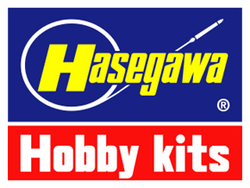
Hasegawa Lockheed P-38J Lightning, 1978
|
|
|
|
ЭНТУЗИАСТ МОДЕЛИЗМА
Молния наносит очередной удар
Немногие типы истребителей Второй мировой войны удостоились большего внимания со стороны производителей наборов, чем P-38 Lightning компании Lockheed. Еще один «Лайтнинг» может показаться излишним для братства моделистов, но когда он выходит от компании со статусом Hasegawa, он, несомненно, заслуживает пристального внимания, и этот набор в масштабе 1/72 стоит приобрести, даже если у вас уже есть два или три «Лайтнинга».
В основном, этот набор предназначен для версии P-38J, хотя он также может быть выполнен как P-38L, имеющий незначительные внешние отличия и способный оснащаться ракетами под крыльями, или более ранний P-38F, для которого предусмотрены дополнительные детали, включая отдельный фонарь и различные варианты капотов, хотя последний подтип требует применения некоторого количества хирургических операций, которые делаются максимально безболезненно благодаря отметкам, нанесенным на пластиковые детали. Набор состоит из 64 деталей, отлитых в основном из темно-зеленого пластика, и они превосходного качества, без изъянов и с тончайшей детализацией поверхности.
Мелкие детали, такие как опоры шасси, соответствуют масштабу и очень аккуратно изготовлены, а задние кромки всех летающих поверхностей тонкие как лезвие. Колеса соответствуют образцу, а их шины имеют четко сформированные протекторы. Посадочные огни представлены прозрачными деталями, причем для всех трех подтипов Lightning предусмотрены разные типы. Подвесное вооружение включает два сбрасываемых бака и две стойки по пять ракет, первая - для P-38J, вторая - для P-38L. Склонность моделей P-38 к посадке на хвост побудила Hasegawa предусмотреть прозрачную опору для хвоста. Интерьер кабины пилота достаточно хорошо проработан, но если отказаться от фигурки пилота, то можно с пользой добавить несколько дополнительных деталей.
Лист декалей содержит маркировку для одного экземпляра каждого из трех подтипов и включает соответствующую носовую часть. P-38F эксплуатировался 94-й эскадрильей 1-й истребительной группы (12-я воздушная армия) в Северной Африке; P-38J летал в 38-й эскадрилье 55-й истребительной группы (8-я воздушная армия) в Северной Европе, а P-38L - «Итси Битси» майора Джорджа Лейвена из штабной эскадрильи 49-й истребительной группы, базировавшейся на Филиппинах. В целом, это очень хороший набор.
Ф.Дж. Хендерсон
Air International 1978-02, Vol.14, No.2
НОВИНКА ДЛЯ ВАС?
НАБОРЫ
Hasegawa
Lockheed P38 J/L или F Lightning. 1/72-й масштаб. Цена £1.35.
Распространяется компанией A.A. Hales Ltd.
Последнее дополнение к прекрасной линейке военных самолетов Hasegawa в масштабе 1/72 - знаменитый «вилохвостый дьявол», и это действительно амбициозное производство, предлагающее не менее трех вариантов в одной коробке. Как и следовало ожидать, набор прекрасно отлит, хотя на нашем образце присутствовало небольшое количество облоя, а стыковка деталей не совсем соответствовала обычному стандарту Hasegawa.
Сборка довольно проста, и хотя для удержания носа рекомендуется использовать 5-граммовый груз, мы обнаружили, что требуется не менее 6½, а узлы шасси достаточно прочны, чтобы выдержать этот вес.
Воздухозаборники P38F состоят из четырех частей и устанавливаются после отрезания секции каждой мотогондолы, которая имеет насечки на внутренней стороне для облегчения удаления. Во время этой операции следует соблюдать осторожность, и, опять же, на некоторых стыках потребуется шпатлевка.
Кабина пилота детализирована, но не хватает приборной панели и ручки управления, хотя консоли предусмотрены - рекомендуется провести дополнительную работу в этой области, так как оба типа фонарей очень тонкие и кристально прозрачные. Топливные баки и ракеты поставляются вместе с прозрачной хвостовой опорой, если груз не установлен моделистом. Hasegawa также позаботилась о том, чтобы указать противоположное направление пропеллеров, и они тщательно прорисованы, так что промахов быть не должно.
Декали достаточно качественные и обеспечивают маркировку P38J из 8-й эскадрильи 55-го боевого полка ВВС, 33-й эскадрильи, P38F из 12-й эскадрильи ВВС, 1-го боевого полка, 94-й эскадрильи и P38L из 49-й эскадрильи штаба боевого полка. Полные руководства по окраске этих самолетов приведены на листе инструкции.
Альтернативные декали можно найти на листе MicroScale 72-172, который, наряду с включенными приборными панелями, также имеет полные трафаретные инструкции, включая фирменные знаки на пропеллеры. Hasegawa заслуживает похвалы за этот последний выпуск, и мы с нетерпением ждем обещанного выпуска моделей самолетов из ассортимента на 1978 год.
ИД
Scale Models Vol. 9 No. 101 February 1978
|
|
|